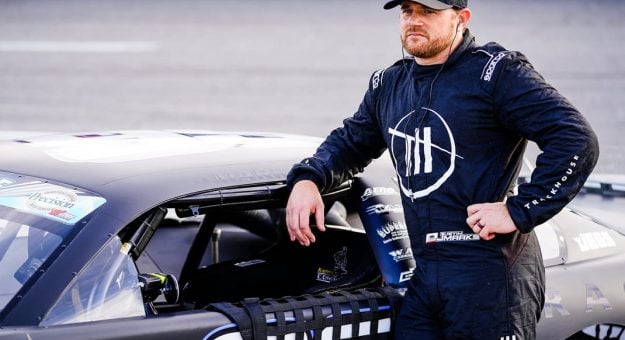Twenty-four years ago, Justin Marks got his first taste of The Great American Race.
At 16, not yet an entrepreneur and ex-NASCAR driver, Marks and his father attended the 39th Daytona 500 on Feb. 16, 1997. Marks remembers it as “one of the best days of my life.”
On the day Jeff Gordon claimed his first Daytona 500 victory, Marks navigated the garage area, having pictures taken with the likes of Ricky Rudd, Dick Trickle, Sterling Marlin and Rick Mast.
“I go back to that moment and just think; could I imagine telling that kid that (24) years from that moment, he was going to own one of those cars in the race?” Marks said.
This month, now 39, Marks will be back on the Daytona 500 starting grid. Instead of driving, as he did in 2018, he returns as the owner of one of the newest NASCAR Cup Series teams —Trackhouse Racing.
The team will field the No. 99 Chevrolet in partnership with Richard Childress Racing, essentially serving as the organization’s third car.
But Marks didn’t jump into the NASCAR ownership game for giggles.
For Marks, the “catalyst” for Trackhouse Racing’s creation is something that won’t arrive until 2022 — the Next Gen car.
The car’s introduction, delayed a year due to the COVID-19 pandemic, is vital to Marks for several reasons.
“I think one is automotive relevancy,” he said. “These cars need to be built with more modern materials like carbon fiber. Single lug, sequential gearbox, independent rear suspension, these are all things that are relevant to the modern automobile. There’s no reason why in 2020 we should be running solid-axle rear ends in these cars. It just doesn’t make sense.
“The other big piece is vendor supplied parts, (which allows a team to become) much more of a sporting enterprise, and less of a manufacturing and engineering enterprise.”
Before fully committing to the ownership path, which he started down in the middle of 2019 with former team executive Ty Norris, Marks had to “challenge” NASCAR on its commitment to rules enforcement on the car before he was satisfied.
“You don’t want to fall in love with a notion that seems like in theory, it’s going to work out really well,” Marks explained. “But then NASCAR leaves these black holes to where Toyota and some of these owners will just drop $30 million of money and we’ll just get our asses kicked in perpetuity.”
For Marks’ interests, it helps to pair yourself with the team that’s been helping develop the car — RCR.
“They’ve got the Next Gen car sitting there, it’s a big part of it,” Marks said.
LAUNCH PLAN
Andy Petree says if he could do it all over again, “I would do it” the Justin Marks way.
In 1996, after three years as Dale Earnhardt’s crew chief at RCR, Petree began climbing a “pretty big hill” to launch Andy Petree Racing. The team fielded cars for drivers such as Bobby Hamilton Jr., Ken Schrader and Kenny Wallace.
Unlike NASCAR of the early 2020s, the Cup Series garage then wasn’t the multi-car wonderland of today with technical alliances between large and small teams.
“You basically had to do it all,” said Petree, now RCR’s vice president of competition. “We built every engine. We built every single race car right out on the rack. We built chassis, we built the bodies, it was just really, really difficult to compete as a small team going up against super established teams back then.”
When Petree left RCR, its Welcome, N.C., headquarters was home to one Cup Series team.
Petree returned in 2017. Four years later, the campus will house RCR’s two Cup Series teams and an Xfinity Series car, Richard Petty Motorsports, Kaulig Racing’s three full-time Xfinity Series cars and Trackhouse Racing.
Throw in engine builder ECR, which is now partnered with Hendrick Motorsports’ program, and that’s a lot of infrastructure for Marks to plug into.
“He’s really smart about this, because he just basically tapped right into everything that we’re doing,” Petree noted. “And from day one, hour one, that is a huge advantage.”
For Marks, it’s the “most efficient and intelligent and responsible way” to launch his team with an eye toward post-2021 when the Next Gen car arrives.
Part of Marks’ thinking: What had befallen some Cup Series teams during recent hard times?
“The conversation started with the fact that that there are a number of organizations in this sport right now that have infrastructure and shops and support systems built out to field more cars than they’re fielding right now,” said Marks, who points to Roush Fenway Racing “still sitting” on a campus built for five full-time Cup Series teams when it only has two.
“Why invest in building that yourself when all that is sitting there, and it’s being underutilized and under monetized by those teams?” said Marks. “I think that the new car that’s coming in ’22 is going to provide an opportunity for such a paradigm shift in the business model of the sport, that I didn’t want to just set myself up for the headache of sitting on all these depreciating assets and this inventory that I don’t think I was going to need.”
Click below to continue reading.
